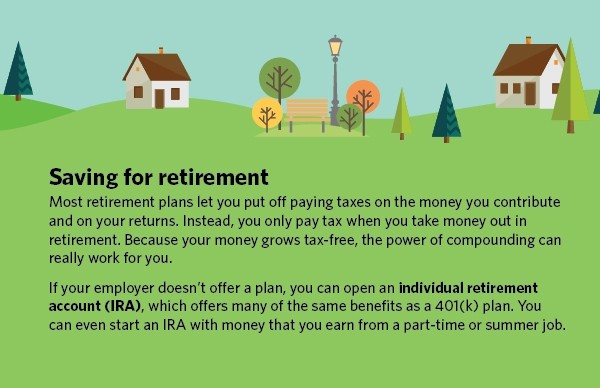ICI Viewpoints
Investing Basics: Saving for Retirement on Your Own

As part of the ICI Education Foundation’s 30th anniversary celebration, we are sharing a series of ICI Viewpoints explaining basic investing concepts, drawn from the ICI Education Foundation’s Investing Road Trip.
A majority of workers aged 26 to 64 were active participants in a workplace retirement plan in 2017, according to ICI’s most recent tabulation of tax data. Next month’s post in this series will explore how workers can take full advantage of these plans to save for retirement (spoiler alert: the first step is to sign up!).
But what if you are self-employed, work part-time, or are just not offered a workplace retirement plan? You still have great options for saving for retirement with similar advantages to the 401(k).

Ways to Save
Individual Retirement Account
The individual retirement account (IRA) is a popular option for workers interested in saving for retirement. More than 46 million US households use IRAs, which hold $9.5 trillion. These accounts are widely used, with good reason—they offer tax benefits; they make retirement assets portable; and they’re flexible. And as long as you have earned income, anyone—even minors—can contribute to an IRA (and, as noted below contribute for a nonworking spouse as well).
Tax benefits. These accounts offer the same tax advantages enjoyed by workers with a 401(k) or 401(k)-style plan at work: investment earnings are not taxed until funds are withdrawn in retirement.
For investors who use traditional IRAs, contributions may also be tax-deferred (within income limits and other qualifying factors, such as the availability of a workplace retirement plan). Alternatively, savers can invest in a Roth IRA, which essentially flips the tax structure: contributions are made with after-tax dollars, but withdrawals may be made tax-free after a required holding period. Both tax-deferred traditional and Roth IRA contributions are subject to income limits.
Portability. Using an IRA can also help workers to preserve retirement assets by acting as a rollover destination for 401(k) and 401(k)-style plan assets. (Rollovers have fueled growth of IRA assets.) As you change jobs and move through your career, you can roll assets from a 401(k) or similar workplace plan into a traditional IRA. This makes retirement assets portable and makes it simpler to manage the savings accrued from different employers. Rolling assets into an IRA also prevents the taxes and penalties—not to mention lost investment earnings!—that you can incur if you cash out a 401(k) before retirement.
Flexibility and control. The flexible structure of an IRA gives you choices when it comes to your retirement savings—you decide where you want to open your account, how much you want to contribute, and when. You can open an IRA with the assistance of investment professionals, such as at full-service brokerage firms, banks or savings institutions, independent financial planning firms, or insurance companies. You can also go through a discount brokerage firm or directly to a mutual fund company. And you can automate IRA contributions, allowing you to save small amounts at set intervals (like on paydays). This makes saving a regular—and relatively pain-free—habit, and enables you to take advantage of the benefits of dollar-cost averaging.
Other Types of Plans
If you work for yourself, you have other options for retirement saving, such as a solo 401(k) or simplified employee pension (SEP) IRA. The IRS has resources for small businesses and the self-employed on different types of plans, IRS rules governing them, and what to consider when choosing a plan.
Spousal IRA
This is the exception to the earned income rule mentioned above. If your spouse does not have earned income, you can contribute to an IRA in your spouse’s name. You must file a joint tax return, and other IRS rules apply, but you can share the love—and support an important household financial goal.
Ways to Get Help
Workers (and nonworking spouses) have options for retirement savings, even if an employer-sponsored plan isn’t an option. The following websites and resources may help to learn more about saving for retirement and getting started.
- Explore your financial services provider’s resources on its website, if you have an IRA
- Check out ICI’s IRA Resource Center
- Review FINRA’s information on IRA Basics
- Ask your financial adviser for help, if your household works with one
- Calculate how much you need to save to reach your retirement goals
Even if you’re on your own, you’re not alone.
Other Posts in the Investing Basics Series
- What Is Investing?
- What Is Risk?
- Types of Investments
- Diversification
- Dollar-Cost Averaging
- Benefits of Mutual Funds
- Tax Benefits to Encourage Saving
- 529 Savings Plans
- Compound Returns and the Power of Reinvestment
- Understanding Fees and Expenses
- Saving for Retirement on Your Own
- Saving for Retirement with a 401(k) Plan
Christina Kilroy is the Vice President of the ICI Education Foundation.
